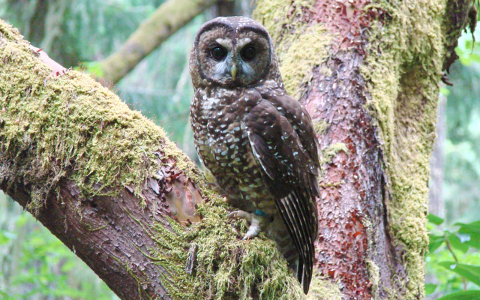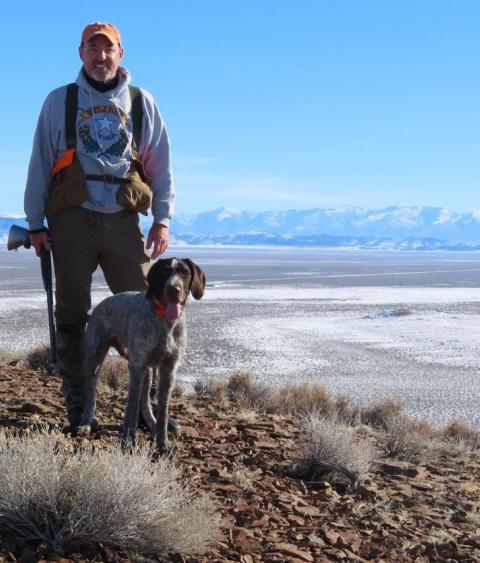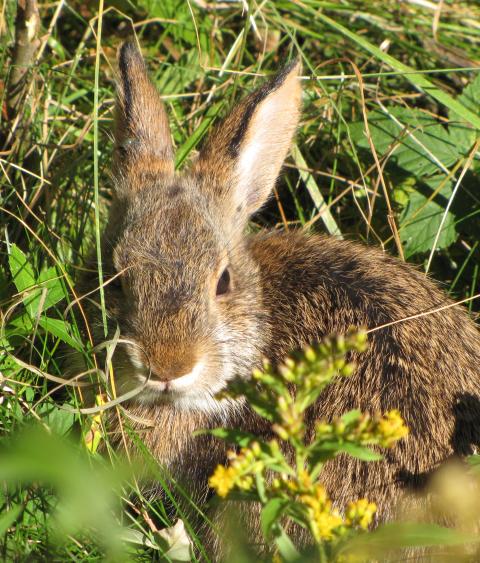Breadcrumb
- Home
- Outdoor News Bulletin
- November 2025
- Same Summer, Different Stories
Outdoor News Bulletin
Same Summer, Different Stories
The 1990 Listings That Proved Collaboration Beats Conflict
The Endangered Species Act (ESA) of 1973 stands as one of the United States' most influential pieces of environmental legislation, designed to conserve the ecosystems where threatened and endangered species occur and to recover these imperiled species through science-based decisions and recovery planning. Central to the ESA is Section 4, which governs the listing process and allows for tailored regulations under Section 4(d) for threatened species. This provision enables the U.S. Fish and Wildlife Service (USFWS) to customize protections, exempting certain activities that do not hinder recovery while prohibiting those that do. In simple terms, for every newly listed threatened species, the Service will determine what protections are appropriate for that species based on science and the specific threats to the species.

By examining two species evaluated under the ESA around the same time—the northern spotted owl (Strix occidentalis caurina) and the Louisiana black bear (Ursus americanus luteolus)—we can highlight how the presence or absence of a 4(d) rule influenced conservation outcomes. Both species faced similar threats of habitat loss in forested ecosystems during the late 1980s and early 1990s, yet their trajectories diverged dramatically: one achieved recovery and delisting, while the other remains threatened amid ongoing declines. This comparison underscores the value of flexible, recovery-focused regulations over blanket prohibitions, a perspective strongly advocated by the Conservation Without Conflict coalition, which promotes greater use of 4(d) rules to foster collaborative conservation efforts.
The Northern Spotted Owl: A Protracted Listing Without Tailored Protections
The northern spotted owl's path to ESA protection began in the mid-1980s amid growing concerns over old-growth forest logging in the Pacific Northwest. Environmental groups petitioned the USFWS in 1987 to list the subspecies as threatened, citing extensive habitat fragmentation, population isolation, and competition from invasive barred owls as primary threats. After an initial denial was challenged in court for improperly considering economic factors, the USFWS proposed listing the owl as threatened in April 1989. The final rule was published on June 26, 1990, officially designating the northern spotted owl as threatened across its range in Washington, Oregon, and California, effective July 23, 1990. This listing imposed the same ESA regulatory protections as those for endangered species, including harm, harassment, or habitat modification, without any exemptions under a 4(d) rule.
The critical habitat for the northern spotted owl was first designated in 1992, covering approximately 6.9 million acres. Revisions occurred multiple times due to lawsuits and new scientific data, expanding the designation to approximately 9.6 million acres by 2012. The absence of a tailored 4(d) rule—and the application of full regulatory protections like those for endangered species—meant that all activities potentially affecting the owl, such as timber harvesting, required rigorous Section 7 consultations for federal actions or incidental take permits for private ones. Recovery efforts have centered on the Northwest Forest Plan (adopted in 1994) and revised recovery plans in 2008 and 2011, emphasizing habitat conservation and barred owl management. Despite these measures, over 30 years later, populations have continued to decline by 31-55% since the listing. While barred owl competition—unaddressed at listing—are now considered as the primary driver of decline, the absence of a 4(d) rule likely reduced voluntary habitat stewardship on private lands, limiting recovery options. The species is still classified as threatened as of 2025. The USFWS found that petitions to list the species as endangered were not warranted, but ongoing threats persist without the flexibility a 4(d) rule might have provided to incentivize stakeholder and landowner cooperation.
The Louisiana Black Bear: A Swift Listing with Customized Regulations
In contrast, the Louisiana black bear's ESA journey, while initiated around the same era, incorporated a 4(d) rule from the outset, fostering a more collaborative approach to recovery. The filing of petitions for listing occurred in 1987-1988, which emphasized severe habitat loss—over 80% of bottomland hardwood forests in Louisiana, Mississippi, and eastern Texas converted to agriculture—along with poaching and population fragmentation. The USFWS issued a positive 90-day finding on August 22, 1990, determining that substantial information warranted a full status review. This milestone occurred just eight weeks after the northern spotted owl's final listing, illustrating the overlapping evaluations of these two forest-dependent subspecies during the summer of 1990.

The authorities published the proposed rule to list the Louisiana black bear as threatened in November 1991, and the final rule followed on January 7, 1992, effective February 6, 1992. Critically, this listing included a 4(d) rule (50 CFR 17.40(i)) that exempted normal silvicultural activities from take prohibitions, provided they did not harm denning bears or specific den trees (e.g., large cypress or tupelo gums with cavities). This tailored approach recognized that managed timberlands could support bear habitat while encouraging private landowners to participate in conservation without fear of overly burdensome regulations. A recovery plan was completed in 1995, focusing on habitat restoration, population connectivity via corridors, and reintroductions. Initially, the authorities proposed critical habitat, but they later vacated it.
With the active participation and help of private landowners, the State of Louisiana and many other stakeholders, by 2016, the USFWS determined that recovery criteria had been met: populations grew from fewer than 150 bears in the 1980s to 500-750 across expanded ranges, over 600,000 acres of habitat were restored through programs like the Wetlands Reserve Program, the Partners for Fish and Wildlife Program, and threats were mitigated. The bear was delisted on March 11, 2016, effective April 11, 2016, with the 4(d) rule removed upon delisting. Post-delisting monitoring, completed in 2023, confirmed stable populations, now estimated at 1,200-1,500, with state management including limited hunting seasons in Louisiana starting in 2024-2025. A 2024 emergency petition by advocacy groups to relist, citing habitat threats, is under review but has not altered the delisted status as of October 23, 2025.
Divergent Outcomes: The Role of Section 4(d) in Recovery Success
Both species were evaluated under the ESA during a pivotal period in the summer of 1990, with the northern spotted owl's final listing on June 26 and the Louisiana black bear's positive 90-day finding on August 22 marking concurrent federal attention to habitat-driven declines. Yet, their conservation outcomes could not be more different. The bear's recovery and delisting in 2016 exemplify ESA success, driven by habitat restoration, population growth, and stakeholder collaboration. In stark contrast, the owl remains threatened, with populations still declining despite decades of full ESA protection.

A key differentiator was the 4(d) rule for the bear, which provided flexibility by exempting non-harmful forestry practices while safeguarding critical reproductive sites. This approach reduced regulatory burdens on landowners, promoting voluntary conservation, collaboration, and habitat connectivity without the proverbial "regulatory hammer" of full prohibitions, like those imposed for species classified as "endangered". For the owl, the lack of such tailoring led to protracted conflicts with the timber industry and landowners, potentially hindering broader cooperation and not advancing recovery. Analysis of ESA effectiveness shows that 4(d) rules allow actions with little impact, saving agency resources and improving recovery.
The Perspective of Conservation Without Conflict: Advocating for Collaborative Tools
The Conservation Without Conflict coalition, comprising over 40 organizations including government agencies, conservation groups, landowners, and industry stakeholders, embodies a proactive approach to ESA implementation that emphasizes collaboration to prevent conflicts between wildlife protection and human activities. Founded on the principle that voluntary, incentive-based conservation can achieve better outcomes than adversarial regulations, the coalition actively promotes the expanded use of 4(d) rules as a key mechanism for tailoring protections to specific species needs while allowing compatible land uses. For instance, in testimony before Congress, coalition representatives have highlighted how 4(d) rules enable "conservation through collaboration," reducing the need for litigation and fostering partnerships that accelerate recovery, as seen in cases like the Louisiana black bear. The coalition views 4(d) rules as essential for addressing "perverse incentives" that arise from rigid ESA applications, instead offering a "blueprint" for sustainable wildlife management that integrates economic and environmental goals. This perspective aligns with successful delistings, where flexible rules have encouraged landowner participation in habitat restoration without fear of overregulation.
While full regulatory protections under the ESA are essential in certain dire scenarios—such as unforeseen outbreaks of disease that decimate populations, like white-nose syndrome devastating cave-dwelling bats such as the northern long-eared bat, or severe habitat limitations that push species to the brink of extinction, as seen with the Mount Graham red squirrel amid extreme isolation in Arizona's sky islands—these strong prohibitions are best reserved for species that are in danger of extinction throughout all or a significant portion of its range (see Polar Bear listing rule).

In most cases, however, designating a species as threatened and implementing customized regulations through Section 4(d) rules, tailored to its specific biology and threats, proves far more effective for conservation and recovery than a one-size-fits-all approach that imposes uniform restrictions, often stifling innovative management and collaborative efforts among landowners, agencies, and stakeholders. This flexible strategy not only reduces regulatory burdens and encourages voluntary habitat restoration but also speeds up species rebound, as evidenced by successful delistings, while rigid mandates can hinder progress by limiting adaptive actions and fostering conflicts.
The parallel yet divergent stories of the northern spotted owl and Louisiana black bear—assessed within weeks of each other in 1990—reveal Section 4(d)’s power to transform recovery. Where rigid prohibitions bred conflict, tailored exemptions foster partnerships. Even acknowledging barred owl competition as the owl’s current dominant threat, a 4(d) rule could have secured effective voluntary habitat management on private and public lands now lost to distrust. The Conservation Without Conflict coalition supports the continued use of species-specific 4(d) rules, reserving full prohibitions for truly endangered taxa. This flexible, science-driven approach fulfills the ESA’s promise of conserving ecosystems, preventing extinction, and enabling coexistence.




